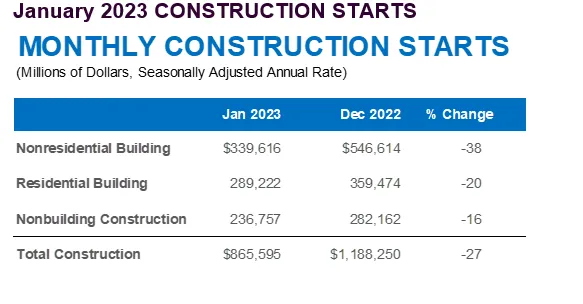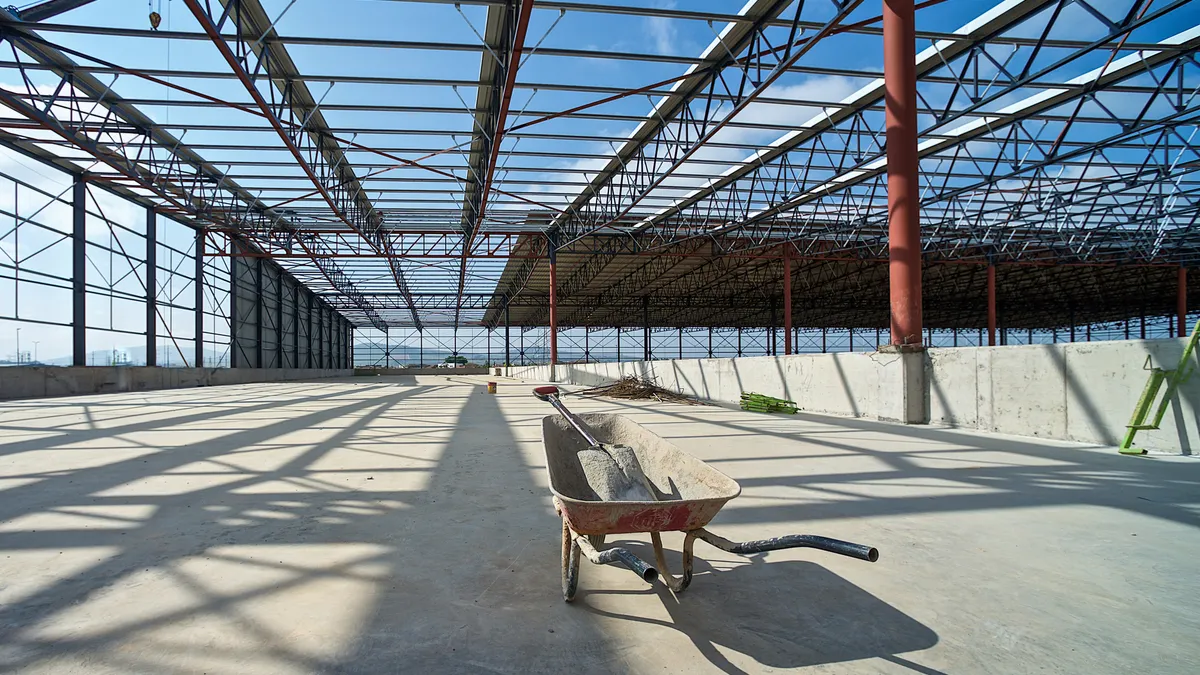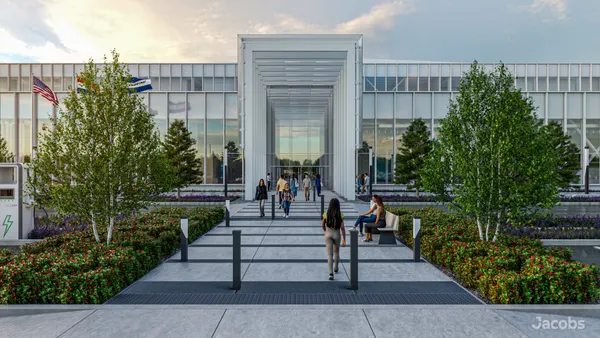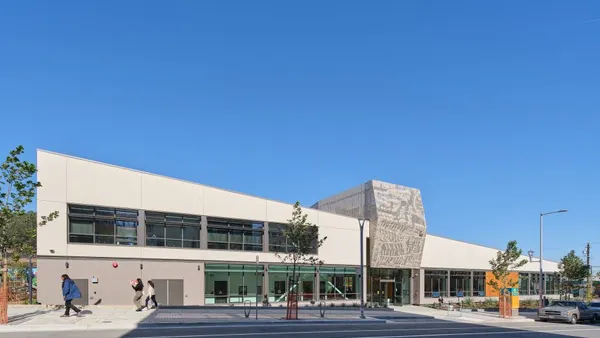Dive Brief:
- Total construction starts fell 27% in January to a seasonally adjusted annual rate of $865.6 billion, according to Dodge Construction Network, a dramatic reverse from December, when new project kickoffs ended 2022 on the upswing. In the latest reading, nonresidential building starts fell 38%, residential starts lost 20%, and nonbuilding starts declined by 16%.
- On a year-over-year basis, total construction was 14% lower in January 2023 than in January 2022. Residential starts lost 34%, reflecting the prolonged weakness in the housing market, while nonresidential building starts were down 2% compared to a year ago. One bright spot was nonbuilding starts — think roads and infrastructure — which were up 10% compared to a year before.
- Despite the stark contrast from a month before, Richard Branch, Dodge’s chief economist, said the numbers should be viewed in context of the unusually strong momentum seen at the end of 2022. “January’s decline in construction starts should not be taken as the beginning of a cyclical downturn in the industry,” Branch said. “Numerous megaprojects have begun over the last few months, obscuring the underlying trend in construction activity.”
Dive Insight:
The challenging comparison to the wave of kickoffs at the end of last year provides one reason to see the most recent numbers in a more favorable light. But Branch noted that some areas of building are likely to fair better than others in 2023, even as he highlighted building’s overall strength.
“While some construction sectors will face stress as the year progresses, current fundamentals point to an industry that is fairly well positioned to weather the storm,” Branch said.
For example, the 38% drop in nonresidential building starts last month was driven by a 91% pullback manufacturing starts following the kickoff of several large projects in December. But within the category, commercial starts dropped 11%, with the beleaguered office category showing the only gain.

Likewise, the 16% drop in nonbuilding starts last month came on the heels of a very large drop (-76%) in utility/gas plant starts following a brisk December.
The 20% drop in residential was spurred by a 37% fall in multifamily starts. The beleaguered single-family category pulled back another 5%. As a bright spot, multifamily starts were still up 21% on a rolling 12-month basis.

The largest nonbuilding projects to break ground in January were:
- The $750 million High Banks wind farm in Belleville, Kansas.
- The $570 million first phase of the Highway 69 express toll lanes in Overland Park, Kansas.
- The $492 million CEPP/EAA reservoir in Palm Beach, Florida.
The largest nonresidential building projects to break ground in January were:
- The $1 billion Prime Data Center campus in Elk Grove Village, Illinois.
- The $515 million Amazon data center in Hilliard, Ohio.
- The $460 million CoStar Group corporate campus in Richmond, Virginia.
The largest multifamily structures to break ground in January were:
- A$200 million mixed-use building in Gowanus, New York.
- A $172 million mixed-use building in Greenpoint, New York.
- The $150 million The Cove residential community in Sacramento, California.














